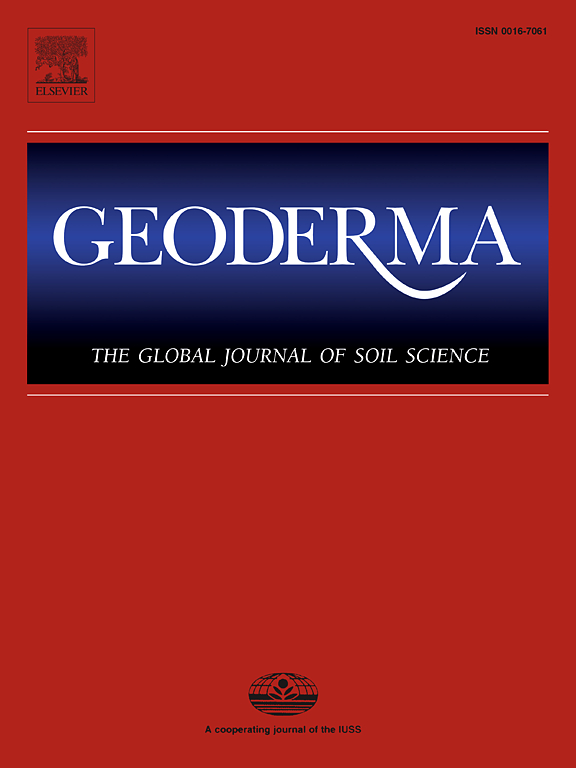Optimization of soil hydraulic parameters within a constrained sampling space
IF 5.6
1区 农林科学
Q1 SOIL SCIENCE
引用次数: 0
Abstract
The direct optimization of soil hydraulic parameters (SHP) in unconstrained parameter space introduces significant uncertainties in ecohydrological modeling, particularly when addressing the complex model structure of Richards’ equation combined with Penman-Monteith equation. Pedotransfer functions (e.g., the latest version of Rosetta 3), which have been extensively trained using abundant soil hydraulic data, could potentially provide a physical constraint for sampling SHP. This study integrates optimization algorithms (Particle Swarm Optimization, PSO; Markov Chain Monte Carlo, MCMC; Sequential Monte Carlo, SMC; Generalized Likelihood Uncertainty Estimation, GLUE) with two sampling strategies − direct optimization of SHP and indirect optimization of SHP derived from soil particle composition (SPC) using Rosetta 3 − to evaluate their performance in ecohydrological modeling under predefined soil conditions. The results demonstrated that indirect optimization of SHP significantly enhances the accuracy in recovering predefined true parameters and states, and reduces the uncertainty of ecohydrological modeling compared to direct optimization of SHP. Specifically, the mean quartile deviation of biases in soil water content and evaporation were reduced from 0.0347 m3/m3 and 0.0027 m/h to 0.0061 m3/m3 and 0.0010 m/h, respectively. Furthermore, integration of the Rosetta 3 diminished the dimensionality of inverse modeling, thereby significantly enhancing algorithm convergence speed and precision. It is recommended to integrate Rosetta 3 with various optimization algorithms to enhance the accuracy of ecohydrological modeling.
求助全文
约1分钟内获得全文
求助全文
来源期刊

Geoderma
农林科学-土壤科学
CiteScore
11.80
自引率
6.60%
发文量
597
审稿时长
58 days
期刊介绍:
Geoderma - the global journal of soil science - welcomes authors, readers and soil research from all parts of the world, encourages worldwide soil studies, and embraces all aspects of soil science and its associated pedagogy. The journal particularly welcomes interdisciplinary work focusing on dynamic soil processes and functions across space and time.
 求助内容:
求助内容: 应助结果提醒方式:
应助结果提醒方式:


